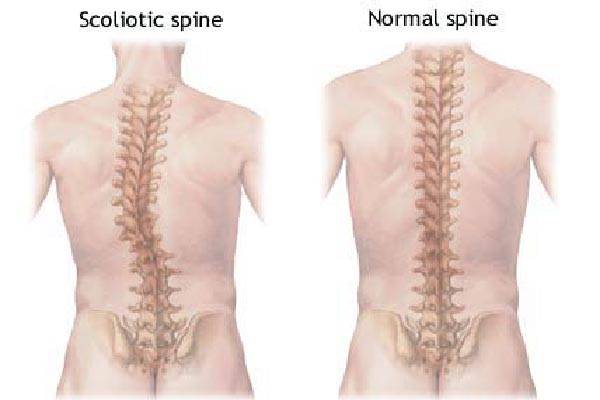Scoliosis is a medical condition in which a person’s spine has a sideways curve. The curve is usually “S”- or “C”-shaped over three dimensions. In some, the degree of curve is stable, while in others, it increases over time. Mild scoliosis does not typically cause problems, but severe cases can interfere with breathing. Typically, no pain is present.
The cause of most cases is unknown, but it is believed to involve a combination of genetic and environmental factors. Risk factors include other affected family members. It can also occur due to another condition such as muscle spasms, cerebral palsy, Marfan syndrome, and tumors such as neurofibromatosis. Diagnosis is confirmed with X-rays. Scoliosis is typically classified as either structural in which the curve is fixed, or functional in which the underlying spine is normal.
Treatment depends on the degree of curve, location, and cause. Minor curves may simply be watched periodically. Treatments may include bracing, specific exercises, posture checking, and surgery. The brace must be fitted to the person and used daily until growing stops. Specific exercises may be used to try to decrease the risk of worsening. They may be done alone or along with other treatments such as bracing. Evidence that chiropractic manipulation, dietary supplements, or exercises can prevent the condition from worsening is weak. However, exercise is still recommended due to its other health benefits.
Scoliosis occurs in about 3% of people. It most commonly occurs between the ages of 10 and 20. Females typically are more severely affected than males. The term is from Ancient Greek: σκολίωσις, romanized: skoliosis which means “a bending”.

دوره تخصص خود را در دانشگاه های علوم پزشکی شهید بهشتی و علوم پزشکی گیلان ( بخش پروفسور مجید سمیعی ) گذرانده اند ، ایشان عضو انجمن جراحان مغز و اعصاب ایران می باشند .

